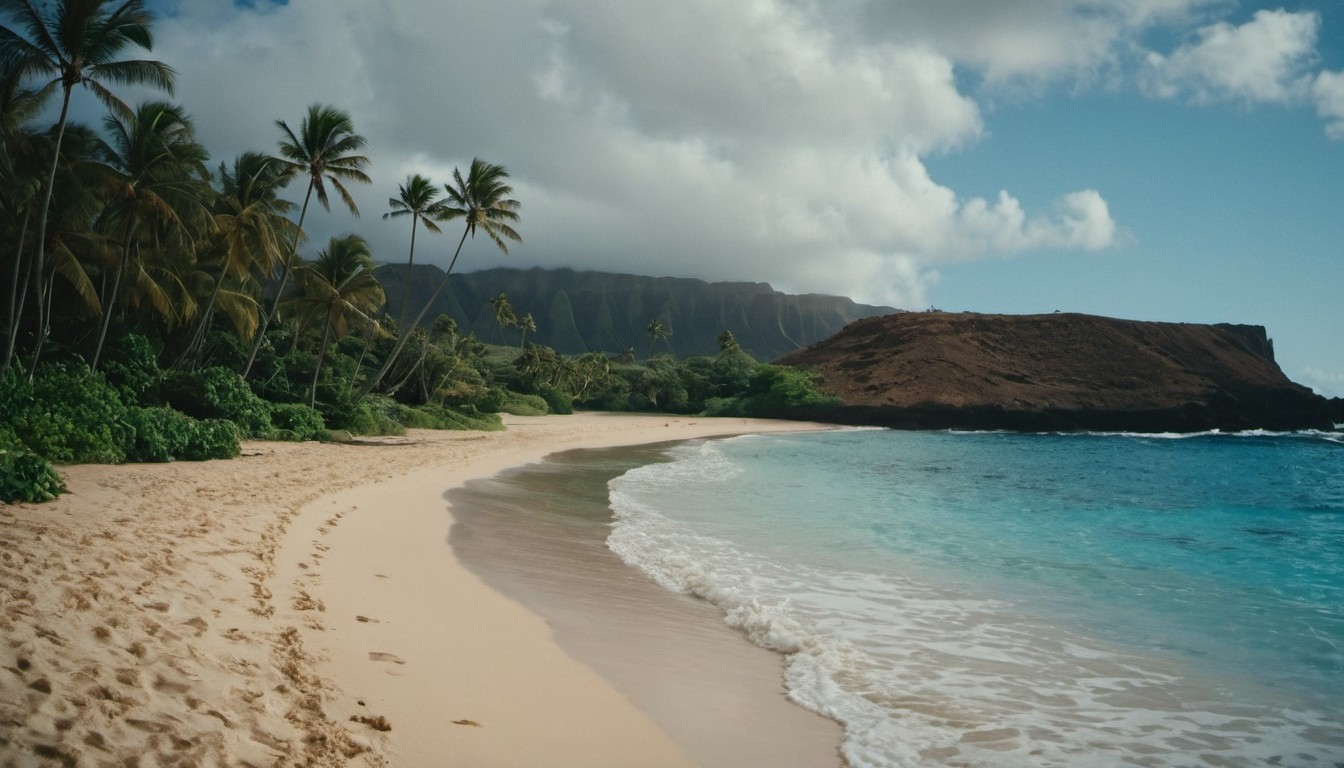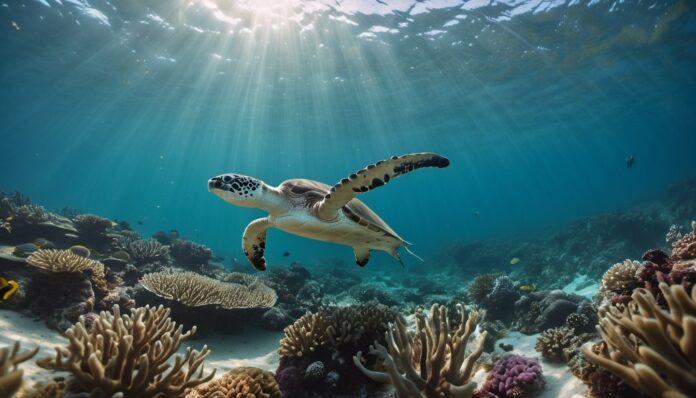The Pacific Ocean is the largest and deepest ocean on Earth. It covers more area than all the landmasses combined and is vital to our planet’s ecosystem, climate, and human activities.
Size and Location
The Pacific Ocean covers over 63 million square miles (165 million square kilometers), making it larger than all the continents put together. It stretches from the Arctic Ocean in the north to the Southern Ocean in the south and from Asia and Australia in the west to the Americas in the east.
Depth and Trenches
The Pacific Ocean is also the deepest ocean, with an average depth of 12,080 feet (3,682 meters). The Mariana Trench, located in the western Pacific, is the deepest part of the ocean, reaching a depth of about 36,000 feet (10,994 meters).
Islands and Archipelagos
The Pacific Ocean is home to numerous islands and archipelagos, including the Hawaiian Islands, the Philippines, and the Fiji Islands. These islands are famous for their diverse cultures, beautiful landscapes, and unique wildlife.
The Pacific Ocean is incredibly rich in marine life. It is home to a vast array of fish, mammals, and other sea creatures. Coral reefs, such as the Great Barrier Reef, thrive in its warm, shallow waters, providing habitat for countless species.
History of Exploration
Research into the characteristics of the Pacific Ocean continues to this day. Whole groups of scientists study the bottom relief, volcanism, geological history, flora, fauna, and much more. Specialists are confident that due to the great depth, which is difficult to reach even with modern equipment, many Pacific representatives of flora and fauna are still undiscovered.
Transport routes have existed here since ancient times, and many tribes and peoples (Incas, Japanese, Aleuts, etc.) used its resources. However, the first European explorers were Vasco Núñez de Balboa and Ferdinand Magellan.
Núñez de Balboa was a Spanish conquistador and explorer who began studying the waters of the Pacific Ocean in 1513. Because the expedition reached the ocean from the south, Balboa named it the “Southern Sea.”
F. Magellan was a Spanish and Portuguese navigator who, together with his expedition, made the first circumnavigation of the globe. In 1520, after passing through a narrow passage later named the Strait of Magellan, he also entered the waters of the Pacific Ocean.
Both expeditions carefully collected information about this place: they made rough outlines of the coastlines, studied weather conditions, flora and fauna, currents, and winds. At the end of the 19th and early 20th centuries, ocean exploration entered a new level. Entire groups of specialists went on expeditions to gather more information about all the features of the reservoir.
Interesting Facts About the Pacific Ocean
- Due to high seismic activity, huge tsunamis often occur here, moving at speeds of 800 km/h.
- Despite its name, the Pacific Ocean is famous for frequent underwater volcanic eruptions, typhoons, and earthquakes. It was named by Ferdinand Magellan, as during his journey, which lasted over 100 days, there was never a storm, and the weather was good.
- The average depth of the ocean across its entire area is 3,984 meters, and its waters wash 43 states.
- Off the northeast coast of Australia lies the Great Barrier Reef – the largest atoll in the world. Its area covers 348,700 km2.
- 90% of all fish belonging to the salmon family inhabit the waters of the Pacific Ocean.
Due to human negligence towards nature, entire mountains of garbage accumulate in the center of the reservoir, with diameters of over a hundred kilometers. - Giant seaweed grows on the bottom, reaching lengths of up to 200 meters.
- The Pacific Ocean is home to 3-4 times more unique representatives of aquatic animals, and more than half of the marine inhabitants of the entire world.
- The largest islands in the ocean are New Guinea (785,753 km2), Borneo (743 km2), and Honshu (227,960 km2).
- The Pacific Ocean covers more than 30% of the Earth’s surface.
- It is larger than all the Earth’s landmasses combined.
- The ocean is bordered by 41 countries.
- The name “Pacific” means “peaceful,” given by explorer Ferdinand Magellan.
- The Pacific Ocean contains more than 25,000 islands.
- The Great Barrier Reef, the largest coral reef system, is in the Pacific.
- It is home to the world’s largest and deepest trench, the Mariana Trench.
- The Ring of Fire, a major area of volcanic activity, encircles the Pacific.
- The Pacific Ocean’s currents affect global weather patterns.
- It contains more than half of the world’s free water.
- The ocean has the world’s largest body of water, the Philippine Sea.
- The Pacific is divided into the North and South Pacific.
- It has the longest coastlines of any ocean.
- The Galápagos Islands in the Pacific are famous for unique wildlife.
- The Pacific Ocean’s deepest point is known as Challenger Deep.
- It plays a key role in global carbon dioxide absorption.
- The ocean’s temperature ranges from freezing near the poles to warm near the equator.
- The Pacific Ocean experiences some of the world’s most powerful hurricanes and typhoons.
- It is a major route for international shipping and trade.
- The ocean floor features underwater mountain ranges, plains, and valleys.
- The Pacific hosts diverse ecosystems, from coral reefs to kelp forests.
- It has some of the world’s largest and oldest seamounts (underwater mountains).
- The Pacific’s biodiversity includes numerous endangered species.
- It is home to many important fisheries that support global seafood supply.
- The ocean’s tides are influenced by the gravitational pull of the moon.
- The Pacific Ocean’s waves are popular for surfing.
- It has been a critical route for cultural exchanges for thousands of years.
- The ocean’s currents help distribute heat and regulate Earth’s climate.
- The Pacific is rich in underwater mineral resources.
- Efforts are underway to protect and conserve the Pacific Ocean’s fragile ecosystems.
The Pacific Ocean is a magnificent and essential part of our world, playing a crucial role in maintaining ecological balance, supporting marine life, and influencing global climate. Understanding and protecting this vast ocean is vital for the health of our planet and future generations.
